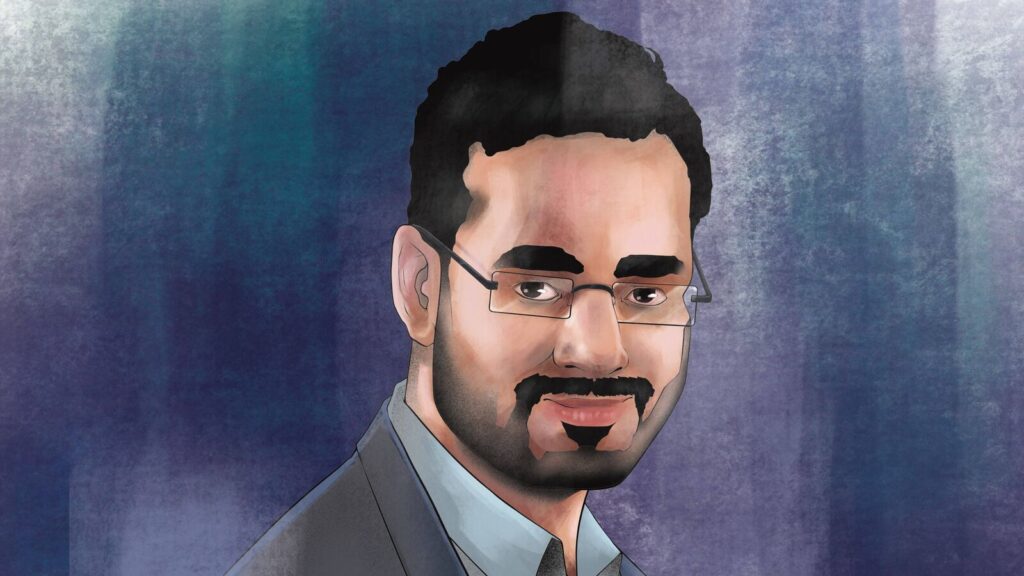Bengaluru: When this person joined ShareChat nearly six years ago, employee perks were a dream. Food coupons were on offer daily; annual hikes were in excess of 40%. For the employees of this vernacular social media platform, life couldn’t be better.
That good life peaked in 2022.
Mohalla Tech Pvt. Ltd, which operates ShareChat, was valued at $5 billion when it raised $300 million in funding in May 2022 from Alphabet Inc’s Google and Singapore’s Temasek Holdings, among other investors.
But early in 2023, two of the company’s co-founders—Bhanu Pratap Singh and Farid Ahsan—quit. The third founder, Ankush Sachdeva, continues to run the company as its chief executive officer (CEO).
Over the next one year, the company resorted to three rounds of layoffs, as it could no longer afford the burgeoning monthly payslips.
“The growth at all costs strategy made cracks in the business more visible,” the person cited above said, refusing to be identified. He was asked to leave the company recently.
When he joined six years ago, ShareChat had 2,000 employees. At one point during the pandemic, the headcount totalled 2,700. Currently, the employee count has more than halved, to about 1,000.

View Full Image
ShareChat started in 2015 with the aim of offering users content in regional languages. Moj, Mohalla Tech’s short video platform, began five years later and was right away touted as India’s answer to TikTok, the popular Chinese video hosting service, banned in India since June 2020. Clearly, it is struggling to live up to that expectation.
Mohalla raised over $1.7 billion across 13 equity rounds and a debt round. Last week, it raised $48.8 million via convertible debentures from its existing investors such as Lightspeed and Temasek, Inc42, a media organization, reported. According to various media reports, investors are willing to value the company at only $1.5 billion now. In other words, a steep 70% cut from its valuation in 2022.
What went wrong?
With over a billion dollars in its armoury, Mohalla went for the kill, acquiring companies to consolidate the market. One big one—Times Internet-backed MX Takatak, bought in 2021 for an equity value of about $600-650 million—didn’t quite work. The company, now, is sitting on a pile of mounting losses. In 2022-23, Mohalla’s losses surged 72% to ₹5,144 crore, as per the company’s latest filings sourced from Tofler.
While the company grew its total income 71% to ₹718 crore during the year, the growth in advertising—a key revenue stream—appears to be slowing down.
To understand the way forward for the company, and if it can survive, we spoke to former and current employees, investors, market watchers and ShareChat’s current bosses—Sachdeva and Manohar Charan, the chief financial officer (CFO).
Ad woes
First, let’s look at Mohalla’s revenue. The company has two monetization models—advertising and live streaming by influencers and celebrities. The pace of growth in advertising revenue is what concerns investors and market watchers.
Mohalla saw nearly a threefold rise in advertising revenue in 2021-22 to ₹212 crore. However, in the following year, the company grew revenue from this stream by a moderate 20% to ₹255 crore.
Customer mix is partly responsible for the sluggish growth. Real money gaming companies, who now have to pay hefty goods and services tax (GST), have cut back on marketing from the platform.
Currently, gaming customers contribute to about 10-15% of the company’s monthly revenue, a ShareChat spokesperson said, adding that the number can drop below 10% in some months. When the Indian Premier League (IPL), the popular T20 cricket tournament, is on, the revenue share jumps.
But then, there is another problem. Some gaming advertisers said they don’t see enough return from the platform.
“We’ve used the ShareChat platform several times for our clients and it did not translate into any substantial business as their engagement and performance was quite shallow,” a top executive at a marketing company said, asking not to be named. Particularly, the platform did not deliver on ‘cost per deposit’, the executive added. Cost per deposit is a metric used to evaluate the conversion rates for gaming companies that advertise on the platform.
For advertising dollars, ShareChat competes with Big Tech firms like Meta. That’s never an easy task. It is hard for a home-grown social media platform to sustain despite offering discounts or cheaper alternatives compared to other big tech companies, an industry consultant, who also didn’t want to be identified, said. Advertisers and users get a better differential value in Meta-backed platforms as they generate highly sophisticated content better suited to one’s preferences, the consultant added.
When we asked CFO Manohar Charan the tough questions, he did not refute the claims made by industry watchers. But he also added that finding value on the platform is a function of multiple parameters. Brands that are willing to adapt to different formats and create advertisements specific to the regional audience they are targeting have been successful in getting the desired conversation rates, he said, citing the example of Truecaller, the caller identification app.
“Truecaller, which already has 200 million daily active users in India, is able to find a significant volume of new users every month on our platform despite already being deeply penetrated in the country,” Charan said. Similarly, Hindustan Unilever, India’s fast-moving consumer goods giant (FMCG), is also an advertiser.
Mint spoke to some non-gaming advertisers on the social media platform and their response was more positive.

View Full Image
Deewanshu Gupta, marketing manager for the food category at DS Group, a leading FMCG conglomerate, has run campaigns for the group’s brands such as Catch, Pulse and Pass Pass.
When the brands initially used ShareChat and Moj in 2022, campaign metrics such as click-through and engagement rates were strictly average, he said. But over time, these metrics improved with more targeted campaigns. Some of the campaigns also exceeded the expected targets.
“However, we would like ShareChat to share more audience insights with us, like what influences the purchase of products,” he said.
Hitesh Poojary, Truecaller’s global performance marketing manager, agreed. “Improving transparency with a real-time dashboard for tracking metrics would be beneficial,” he said, adding that Truecaller is satisfied with the campaign outcomes owing to ShareChat’s substantial user base in tier 2-tier-3 regions.
Currently, Mohalla has more than 325 million monthly active users across all its platforms.
The other headwind facing many advertising-dependent businesses, including ShareChat, is a slowdown in marketing budgets due to geo-political and economic headwinds globally and the funding winter when it comes to tech startups.
We have seen clients drop their customer acquisition costs requirement by a fourth.
—Ankush Sachdeva
Advertising expenditure in India is expected to grow at 10.2% in 2024 to ₹1.5 trillion, slower than last year’s 11.3%, according to media investment company GroupM, Mint had earlier reported. Last year, GroupM had to lower its advertising growth forecast twice—it had initially projected a growth of 15.5%.
“We have seen clients drop their customer acquisition costs requirement by a fourth,” CEO Sachdeva acknowledged.
Takatak challenge
One common thread runs across most troubled unicorns, or companies valued at over a billion dollars, today. When times were good and the venture tap was free flowing, they all resorted to aggressive inorganic growth, gobbling up rivals big and small. ShareChat was no exception.
While MX Takatak was its most expensive buy, the social media firm made a string of smaller purchases. It acquired short-video app Clip (less than $10 million); fashion peer-to-peer marketplace Elanic (less than $10 million); meme-sharing app Memer and artists and brands distribution platform HPF Films.
In 2020, Mohalla launched Moj after TikTok was banned in India because of data privacy and national security concerns. Moj emulates TikTok’s features and operates in the short video segment. It subsequently acquired MX Takatak in 2021. This was the company’s biggest buy—like we mentioned earlier, it was for an equity value of about $600-650 million. The acquisition has contributed to most of the company’s costs, a person in the know, who didn’t want to be identified, said.
In 2022-23, Mohalla reported ₹816 crore as impairment costs for its investment in Takatak, regulatory filings show.
In 2020, Mohalla launched Moj after TikTok was banned in India because of data privacy and national security concerns. Moj emulates TikTok’s features.
However, CFO Charan believes that the acquisition isn’t a failure. “Impairment is not the right way to look at this—after this acquisition, the valuation of shareholders has gone up. It consolidated the market and our customer acquisition costs went down significantly,” he explained. All acquisitions, thus far, have been instrumental in filling gaps in the company’s business, he added.
People and servers
So, what’s the company’s game plan, going ahead?
Mohalla wants to bring down its losses but to do that, it has to reign in costs. People and server costs are its two big expense lines.
Multiple rounds of layoffs have already slashed employee costs substantially—the company claims to have cut cash burn by 80% in calendar year 2023.
In December 2023, the company announced that it had laid off 15% of its workforce in a bid to achieve profitability in four-six quarters. Sachdeva noted that the startup “overestimated the market growth in the highs of 2021 and underestimated the duration and intensity of the global liquidity squeeze”, during a round of layoffs earlier in the year.
“This is the most efficient we have been,” the CFO said, talking about the company’s headcount now.
Server costs, an integral part of hosting content and regulating traffic, is a beast when it comes to social media platforms. Sachdeva said that Mohalla is one of the largest cloud spenders in India and that “this is the single largest cost item for the company”. He didn’t share further details.
Reigning in this cost will, therefore, be the next big challenge for ShareChat and Moj, considering that the businesses will need to both increase their user base and the content they would carry.
Growing ARPU
When it comes to revenue, Mohalla’s big hope is the live streaming service, more prominent in Moj than ShareChat. It has, and is growing faster than the advertisement business, the company stated.
Through this segment, consumers can buy virtual items and gift those to their favourite creators or influencers as a token of appreciation.
Nonetheless, the company continues to work on building the advertising business. It is working on artificial intelligence (AI)-driven ad targeting algorithms. “These algorithms should drive time spent on the platforms and increase ad opportunity,” the CEO said.

View Full Image
Sachdeva added that improving the average revenue per user (ARPU) is a top priority now to achieve overall profitability. Currently, the company has an ARPU of just over $1 per daily active user. The company claims that the ARPU has expanded by nearly 50% in the last four quarters.
While competition is fierce in the short video format—Moj competes with Youtube and Instagram Reels—investors view this as a growth market. “The short video-driven ad revenue is still in the early stages of monetization in India and we believe that the company will have good market share in the future,” an investor who didn’t want to be identified, said.
They need to build engagement and bring in better influencers to attract the right kind of audience.
—A former employee
For now, the company is busy trying to convince advertisers to try out the short video format—a tough task in times when marketing budgets are under pressure.
The company needs to do more to improve engagement, several people Mint spoke to said. “They need to build engagement and bring in better influencers to attract the right kind of audience…that’s how Instagram has become successful. Brands are essentially paying for impressions,” a former employee, who didn’t want to be identified either, said.
Both Sachdeva and Charan have their work cut out.
#ShareChat #Moj #floundering #businesses #fixed


